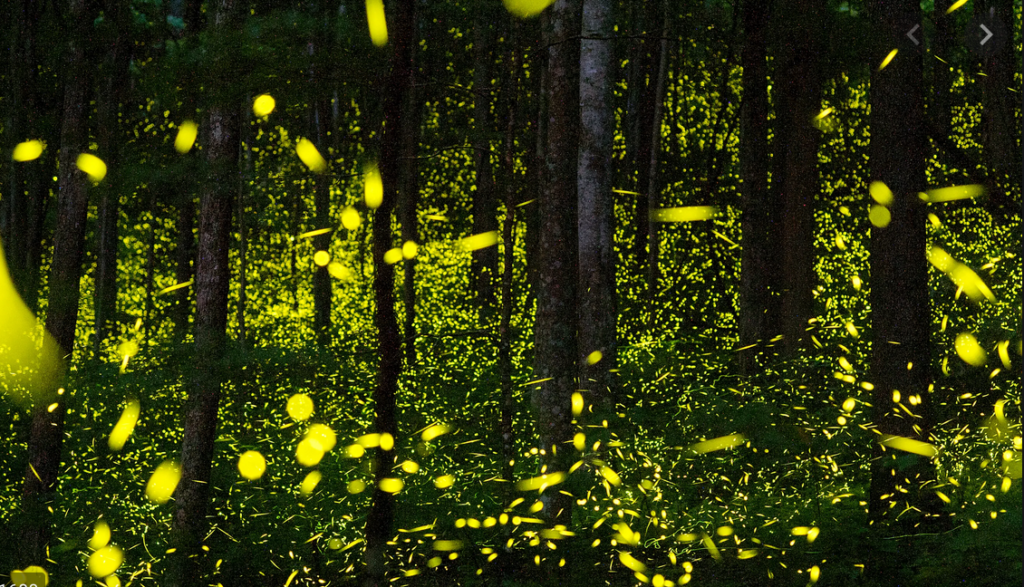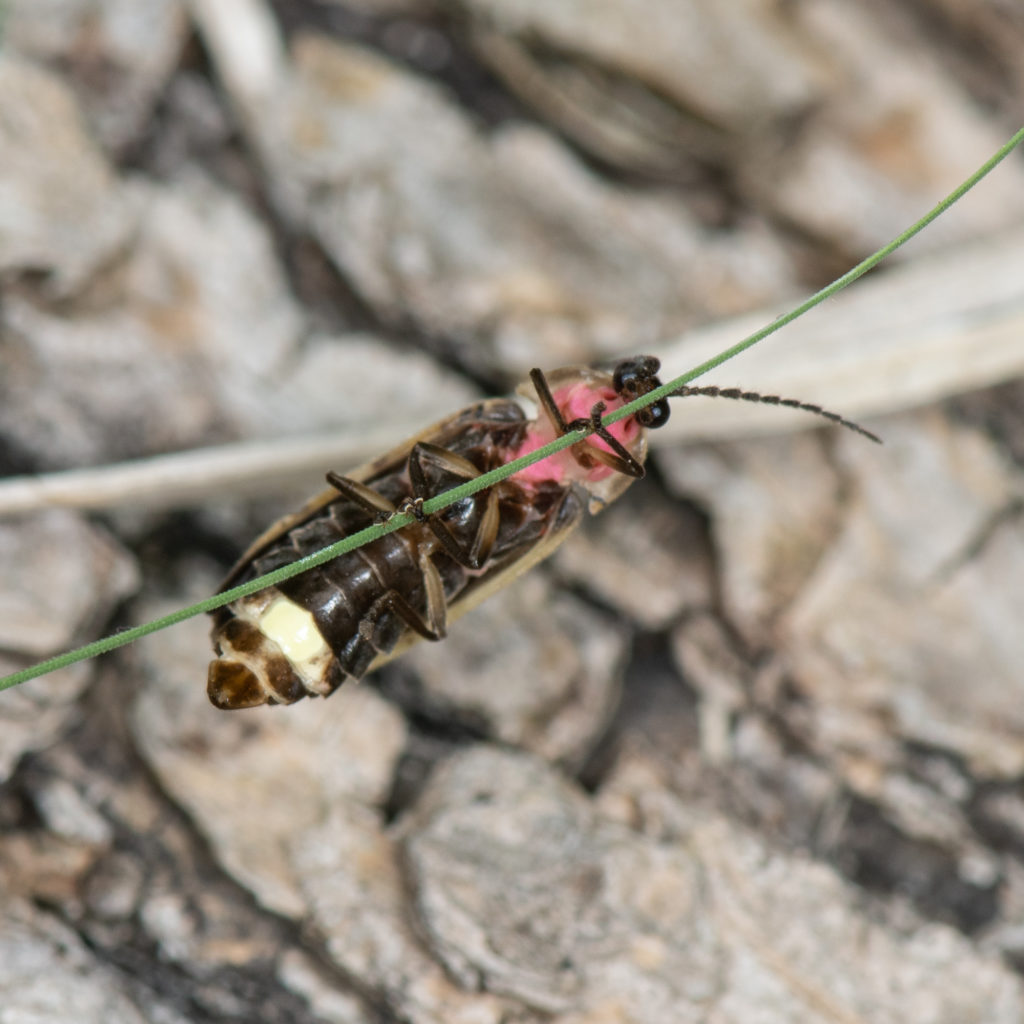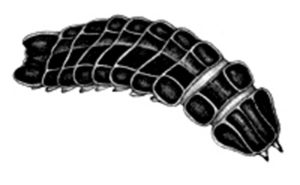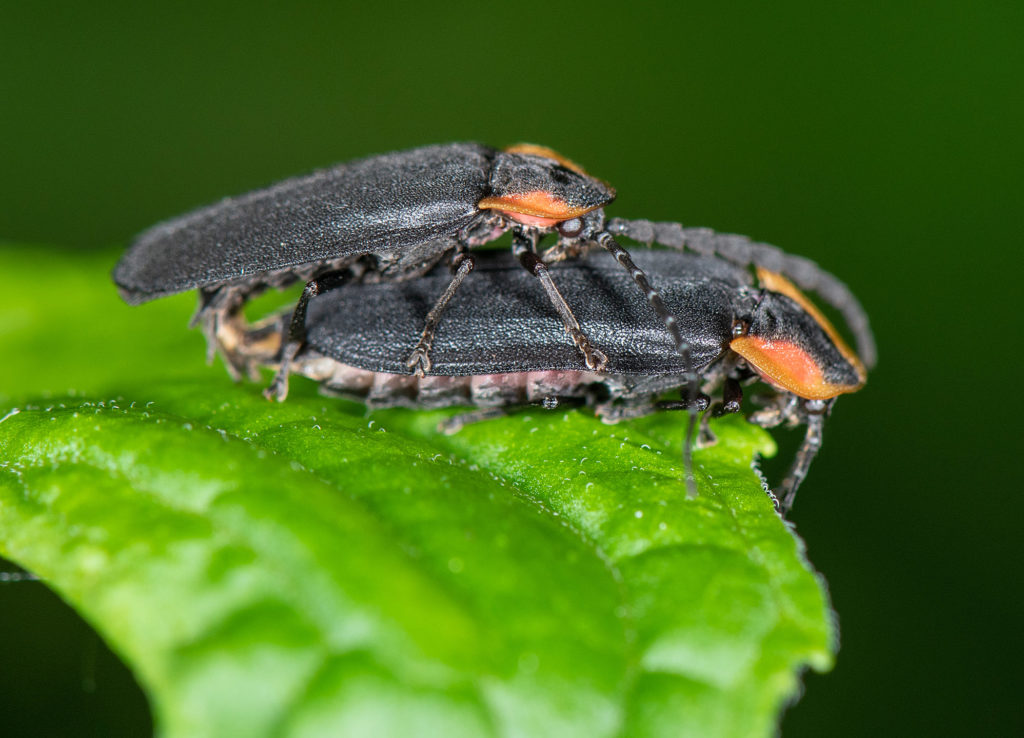For the past three nights (mid June) I have watched as many as a hundred fireflies blinking in my yard. This is so hopeful because for years I have rarely seen them. Twenty-five years ago, I remember walking out at night with my kids on a warm summer night. In the field below were hundreds of fireflies with blinking lights. The kids ran down in the field shrieking with joy.
Yes, they are magical, but they don’t come from pixie dust.
The greenish glow or “bioluminescence’ of adult fireflies comes from a light-producing organ in its abdomen. The light is produced by a chemical reaction in its body and the reaction is triggered by oxygen from the breath of the firefly. So a firefly can control its flashing pattern with its breath. Each species of firefly has a specific flashing pattern that helps it locate a mate. In observing fireflies you may see the male flash once and then flash again 5 to 10 seconds later. Typically a male will fly just above the grass flashing for a female of its species. It will continue this flashing until a female hiding in the grass, flashes back to it. There are also species that flash twice instead of once.
Early Summer Firefly watching:
- Track a firefly and make a map of where you see the firefly go.
- Try to find female flashers in the grass.
- Keep track of the number of flashes a firefly makes and the amount of time between flashes. How many different flashing patterns (species) can you find?
- What is the most common type of firefly? Make a chart of the different types:
One Flash – Two Flash – Other Patterns - Catch some fireflies in a jar, enjoy them for a few minutes and then release them, so they can mate and complete their life cycle.
There is danger in the weeds!
It all sound so simple, a male firefly flashes and a female waiting in the weeds flashes back. Some female fireflies are predatory and mimic the blinking pattern of another species, to draw the male to her. Imagine a male locating its mate and just when the male thinks it is going to mate, the “female mimic” kills and eats the male.
Firefly life cycle
Fireflies are not flies or bugs but actually a type of beetle. The adults live only long enough to mate and lay eggs (usually 1-2 weeks). Mated females lay up to 100 eggs under leaves and the larvae hatch in about a month. Surprisingly the eggs of some species of firefly glow dimly in the soil. Most of a firefly’s life is spent underground as a larva. In fact, some firefly larvae live underground for almost two years. They are found under leaves and mulch in moist soil. The larvae are predatory and feed on earthworms, slugs and snails. Many species of larval fireflies have “lights” and have been called “glowworms”. In late spring or early summer of the next year, the larvae makes a mud chamber and forms its pupae. While in the mud chamber, the larvae metamorphoses into an adult flying beetle in 2-3 weeks.
September firefly watching:
- Look in your moist leaf pile for firefly larvae.
- Once you find one, look at its light-producing organ with a magnifier.
Where have all the fireflies gone?
Alert! Have you noticed that you don’t see as many fireflies as you used to? This is not happening just in your yard, but researchers are seeing firefly populations disappearing around the country. It is not really clear what is causing the drop in firefly numbers, but there are several things you can do to create a friendlier environment for fireflies and other invertebrates in your neighborhood.
- Don’t use chemical fertilizers, pesticides or herbicides. Keep your yard friendly to fireflies and pollinators by using natural fertilizers. Chemical fertilizer may harm the ground-dwelling firefly larvae. Spraying pesticides or herbicides in your yard may kill adult fireflies and adversely effect ground-dwelling creatures like slugs which are food for firefly larvae.
- Don’t over-mow your lawn. Frequent mowing may disturb local adult firefly populations. Leave an area of your yard un-mowed from mid June through July because adult fireflies like to hide in tall grass for protection.
- Build a small pond. Fireflies like standing water and moist areas and tend to congregate in these areas.
- Keep a leaf pile . Firefly larvae live underground and feed on creatures that live in the leaf litter. Rotting logs and leaf piles are also excellent microhabitats for fireflies.
- Turn off outside lights Too much light pollution can disrupt the mating behavior of fireflies. If they are unable to find mates, then they will not be able to complete their life cycle and lay eggs.
- Catch and Release – If you are going to catch fireflies in a jar make sure you release them so they can find a mate.
- Make a brochure about fireflies – Give it to your neighbors and alert them about the plight of fireflies. Tell them some interesting facts about fireflies and let them know what they can to do make their property better for fireflies.
- Join Firefly Watch Citizen Science and participate in a firefly study near your home:
https://www.massaudubon.org/get-involved/citizen-science/firefly-watch








